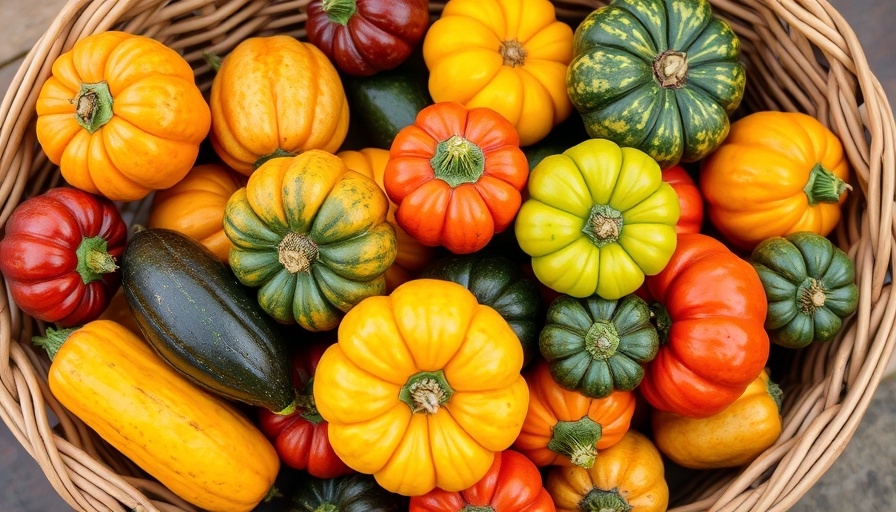
Choosing the Perfect Patty Pan Squash Varieties for Your Garden
Patty pan squash, with their unique flying saucer shapes and vibrant colors, have charmed gardeners and chefs alike for centuries. Whether you’re a seasoned gardener or a novice looking to enhance your gardening skills, understanding the different varieties of patty pan squash is vital. In this article, we will explore 13 of the best varieties of patty pan squash to help you select the right ones for your summer garden.
A Short History of Patty Pan Squash
The journey of patty pan squash in North America is rich and storied. Originally cultivated by Northeastern Native American tribes in the late 16th century, varieties such as the "White Scallop" were prized for their excellent flavor and prolific yields. Early colonists quickly adopted these squashes into their diets, and they have maintained a presence in American gardens ever since, showing both heirloom and new hybrid varieties.
The Allure of Patty Pan Squash
Patty pan squashes are not only visually appealing but also incredibly versatile in the kitchen. Their mild taste complements various dishes, making them popular in salads, stir-fries, or simply grilled. Kids who may hesitate to eat vegetables are often drawn to these charming squashes due to their unusual shapes, helping to introduce healthier eating habits early in life.
Top 13 Varieties of Patty Pan Squash
Now, let’s delve into the details of some of the best varieties available:
- Benning’s Green Tint - This heirloom variety, first introduced in 1914, produces pale green fruits that mature to white. It yields abundantly and is ready for harvest in just 52 days.
- Early White Bush - A productive heirloom known for its mild flavor, it matures in 54 days, ideal for gardeners looking for a quick turnaround.
- Gelber Englischer - With a history dating back to the 1800s, this variety ripens into a yellow squash and is prized for its delicious taste.
- Jaune et Verte - A beautiful cream-colored squash with vibrant green stripes, perfect for those who enjoy unique aesthetics.
- Lunar Eclipse - This striking variety showcases a mix of white and green, providing a visual feast in the garden.
- Moonbeam - As the name suggests, it boasts a bright, sunny color that is lovely both visually and in flavor.
- Partial Eclipse - Another captivating choice, blending shades of green and yellow.
- Peter Pan - This hybrid offers compact plants that yield flavorful fruits in less space, great for urban gardens.
- Scallop Blend - A mix of different patty pan varieties, providing gardeners with a taste of diversity.
- Sunburst - Known for its buttery yellow hue, it's a favorite for its taste and garden appearance.
- Total Eclipse - This variety offers a unique twist with its coloration; perfect for adventurous gardeners.
- Y-Star - A standout for its shiny yellow skin, it thrives under various growing conditions.
- Yellow Bush - A classic choice for those who seek a true representation of the yellow patty pan squash.
Growing Tips for a Successful Patty Pan Harvest
Once you've selected your favorite varieties, it’s essential to adopt effective growing techniques. Patty pan squash typically thrives in sunny conditions and well-draining soil. Regular watering, particularly during flowering and fruit set, is crucial. Additionally, keep an eye out for common pests that may find these delightful squashes appealing.
Experimenting with Varieties
Don’t hesitate to experiment with different varieties to discover which ones resonate most with your taste preferences. Many gardeners enjoy the challenge of trying to cultivate new types, and the results can be rewarding in flavor and productivity.
Planting Patty Pan Squash in Your Garden Design
Incorporating patty pan squash into your garden can enhance your design, providing not just food but also a focal point due to their unique shapes and colors. Consider using raised beds or containers for better soil control and aesthetics. The compact growth habit of many varieties makes them a great addition to small gardens, maximizing space while still yielding delicious crops.
Conclusion: Make Patty Pan Squash a Staple in Your Garden
Patty pan squash offers a unique experience for gardeners and cooks alike. By incorporating one or more of these delightful varieties into your garden, you can enjoy a tasty and visually stunning harvest. Start your journey today by researching local seed suppliers or garden shops that can provide you with the right seeds to grow these fun squashes.
 Add Row
Add Row  Add
Add 




Write A Comment